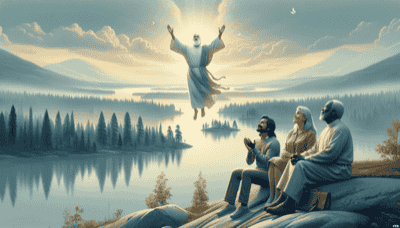We're here to help you keep count of the days to or since a date. Just click the button below and enter your chosen date to get started. Also choose the suggested days or search for a special day above #countingthedays

Ascension Day, known as "Helatorstai" in Finnish, is a Christian holiday that commemorates the ascension of Jesus Christ into heaven. It falls on the 40th day of Easter, which is always a Thursday, typically in May or early June. In Finland, like many other countries where Christianity has played a significant role in cultural traditions, Ascension Day is a public holiday.
The roots of Ascension Day date back to the earliest days of Christianity and are based on accounts from the New Testament, particularly the Acts of the Apostles (1:9-11). The day has been observed by Christians for many centuries and became particularly significant in many European countries during the Middle Ages.
In Finland, Ascension Day was traditionally marked with church services and religious processions. One of the old customs was "Helatorstain säänennustus," which translates to "Ascension Day weather prediction." It was believed that the weather on this day could predict the weather for the upcoming summer.
In modern times, religious observances remain at the heart of Ascension Day celebrations for those who are members of Christian communities. Special church services are held to mark the occasion.
For many Finns, regardless of their religiosity:
Public Holiday: As it is a public holiday, most businesses are closed. This allows people to have a day off work to relax or spend time with family and friends.
Outdoor Activities: Many take advantage of the springtime holiday by engaging in outdoor activities such as picnics, walks in nature, or gardening if weather permits.
Cultural Events: Some communities may host concerts or cultural events that acknowledge both religious and secular aspects of the holiday.
Despite its religious origins, for a portion of Finns today, Ascension Day serves as an extra day for leisure activities rather than religious reflection. However, it still stands as an important marker within Finland's calendar year signaling the approach of summer.